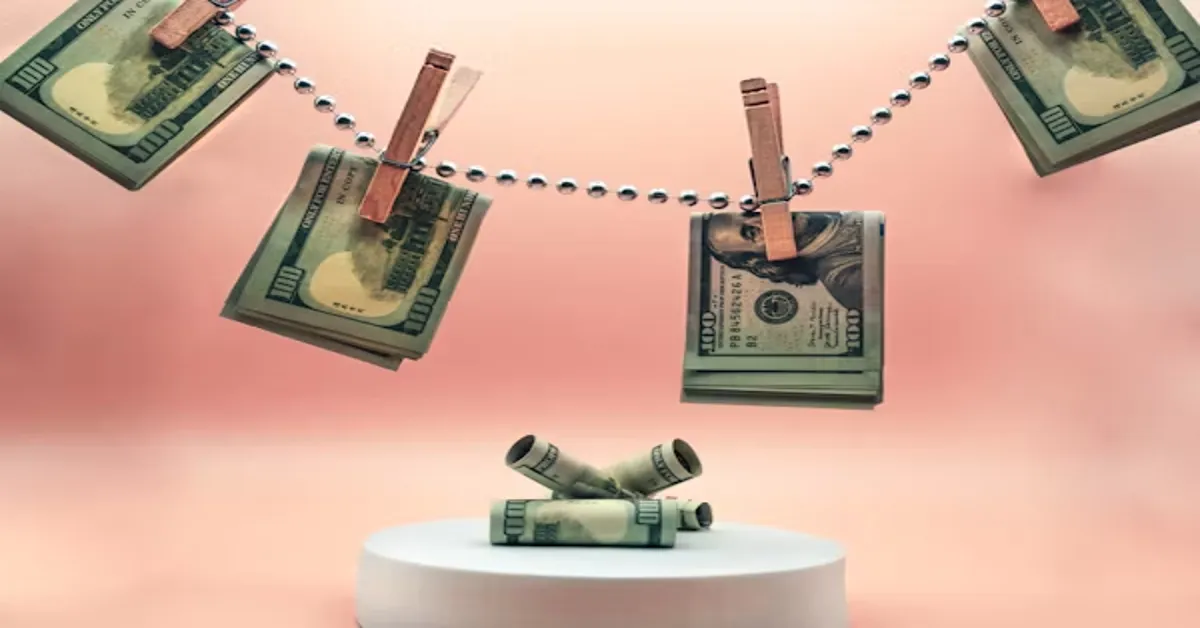Wealth has always fascinated humanity. For centuries, people have looked for ways to build, preserve, and grow riches. Traditional paths such as business ventures, inheritance, investments, or high-paying professions dominate the landscape of financial success. Yet, beyond the familiar lies a stranger realm: weird wealth. This phrase refers to the unusual, unexpected, or even downright bizarre ways individuals and societies generate prosperity. Weird wealth is not only about eccentric millionaires or quirky fortunes; it is also about the psychological, cultural, and historical aspects of how value can be created in surprising ways.
In this extensive article, we will explore the world of weird wealth in detail. From peculiar industries and unusual careers to historical oddities and modern digital quirks, this exploration will reveal how wealth can sometimes emerge from the strangest of sources.
Understanding the Concept of Weird Wealth
Weird wealth does not imply illegitimate or unethical wealth, though those can sometimes intersect. Rather, it refers to instances where prosperity arises through unexpected means that challenge mainstream ideas of financial logic. Consider someone who becomes wealthy from selling pet rocks, or another who earns a fortune auctioning virtual land in a game world. These outcomes defy traditional notions of value but represent real financial success.
The fascination with weird wealth stems from two core truths:
- Human Perception of Value: Wealth is often tied to what people are willing to pay for, even if outsiders see little worth in it.
- Creativity and Opportunity: Unconventional thinking often opens doors to riches in areas overlooked by mainstream markets.
Historical Examples of Weird Wealth
History provides many strange yet fascinating cases of weird wealth. These stories remind us that what appears irrational in one era can become lucrative in another.
- Tulip Mania in the 1600s: During the Dutch Golden Age, tulip bulbs reached extraordinary prices, with some bulbs worth more than houses. The bubble eventually collapsed, but it remains a prime example of how wealth can be tied to strange fads.
- Guano Trade in the 19th Century: Bird droppings may not sound glamorous, but guano was once a highly prized fertilizer. Nations even fought wars over islands rich in guano deposits.
- Odd Collectibles: From antique dolls to rare stamps, history has shown that seemingly ordinary items can become valuable assets when scarcity, nostalgia, and collector demand intersect.
Modern Manifestations of Weird Wealth
In today’s world, wealth creation has taken even stranger turns, thanks to technology, globalization, and shifting cultural norms. Some modern cases include:
- Digital Goods and NFTs: Virtual art, gaming skins, and digital collectibles are bought and sold for staggering amounts. Many struggle to grasp why people pay millions for pixels, yet demand proves their value.
- Social Media Fame: Influencers earn fortunes from sponsorships, ads, and merchandise, often starting from quirky or niche content that few would have predicted as lucrative.
- Unusual Startups: From companies selling bottled air to firms producing edible insects, new industries continually emerge that baffle traditional investors but capture niche markets.
The Psychology Behind Weird Wealth
To understand weird wealth, we must examine the psychology of human value. Why do people pay fortunes for things that seem bizarre?
- Scarcity Effect: When something is rare, even if odd, it can attract high value.
- Status Symbol: Wealthy buyers often want to stand out, and unusual purchases help them signal exclusivity.
- Speculation: Many invest in strange trends hoping for rapid appreciation.
- Novelty and Entertainment: Humans enjoy quirks, humor, and novelty, making them spend money on the strange.
This psychological foundation explains how weird wealth thrives despite skepticism.
Categories of Weird Wealth
To better understand this phenomenon, let us organize weird wealth into categories with concrete examples.
| Category | Examples | Explanation |
|---|---|---|
| Fads and Trends | Tulip Mania, Beanie Babies, Fidget Spinners | Temporary crazes create inflated value before collapsing. |
| Unusual Careers | Professional cuddlers, virtual property managers, slime makers | Eccentric niches turned into income streams. |
| Digital Oddities | NFTs, memes sold as art, domain name flipping | Value tied to internet culture and digital scarcity. |
| Strange Natural Resources | Guano, ambergris (whale vomit), edible insects | Odd substances that fulfill unique needs or desires. |
| Collectibles and Antiques | Rare coins, vintage lunchboxes, misprinted toys | Rarity, nostalgia, and collector passion drive up value. |
| Novelty Businesses | Pet rocks, bottled water from glaciers, air purifiers for luxury markets | Businesses built around humor, novelty, or marketing genius. |
Case Studies of Weird Wealth
1. The Pet Rock Phenomenon
In the 1970s, Gary Dahl famously sold ordinary rocks marketed as “pets.” With clever packaging and humor, the fad exploded, and Dahl became a millionaire. This case highlights how imagination and marketing can create wealth from the mundane.
2. Meme Millionaires
The rise of meme culture led to original meme creators selling digital rights for substantial sums. For example, images like “Disaster Girl” sold for hundreds of thousands of dollars as NFTs. The bizarre nature of monetizing humor illustrates digital wealth.
3. Ambergris Fortunes
Ambergris, a waxy substance from sperm whales, has been used in perfumes for centuries. Rarely found floating on oceans or washed ashore, it has been worth thousands of dollars per pound, proving how even waste products of animals can be wealth sources.
Cultural Differences in Weird Wealth
What one culture considers bizarre wealth, another may see as normal. For example:
- In Japan, vending machines dispense everything from hot meals to clothing, creating unique micro-industries.
- In parts of Africa, the mobile money system M-Pesa created wealth for entrepreneurs despite skepticism from traditional bankers.
- In Western markets, collectibles like Pokémon cards or baseball memorabilia are highly prized, while outsiders may find the craze unusual.
These cultural differences underline how perception shapes weird wealth.
The Role of Technology in Weird Wealth
Technology has amplified wealth in unprecedented ways. Social media allows fads to spread globally within days, while digital platforms enable the sale of goods and services that never physically exist. E-commerce, blockchain, and gaming worlds create environments where virtual scarcity mimics physical scarcity.
Examples include:
- Second Life Real Estate: Some individuals earned six-figure incomes selling virtual property in this online world.
- Streaming Platforms: Twitch and YouTube creators earn fortunes from unique niches like ASMR, gaming commentary, or even watching paint dry.
Risks of Weird Wealth
While weird wealth stories are fascinating, they come with risks:
- Volatility: Fads can collapse overnight, leaving investors with worthless assets.
- Scams and Exploitation: The strangeness of markets sometimes attracts fraud.
- Lack of Tangibility: Digital assets or novelty products may struggle to hold value long-term.
- Psychological Pressure: People who gain sudden wealth may face stress, public scrutiny, or mismanagement of finances.
Understanding these risks is essential before chasing bizarre fortunes.
Benefits of Weird Wealth
Despite risks, weird wealth offers unique benefits:
- Encourages Creativity: Unconventional paths highlight the power of imagination.
- Expands Economic Boundaries: It shows that value is not limited to traditional industries.
- Provides Entertainment: Many wealth stories bring joy and fascination.
- Democratizes Opportunity: Anyone with a quirky idea can potentially strike gold.
Weird Wealth in Pop Culture
Movies, books, and media frequently draw inspiration from wealth. Characters who strike it rich in unusual ways capture public imagination. From eccentric inventors in films to quirky tycoons in novels, weird is a recurring theme reflecting society’s fascination with odd fortunes.
The Future of Weird Wealth
Looking forward, weird is likely to expand. Emerging technologies such as AI, biotechnology, and space exploration may create new strange opportunities. Imagine fortunes made from selling lunar dust, AI-generated art, or bio-engineered pets. The boundaries of value will only continue to stretch.
Conclusion
Weird wealth is not just about odd fortunes but about the nature of value itself. It demonstrates that wealth can come from surprising, creative, and sometimes hilarious sources. By studying weird, we learn that opportunities exist everywhere—sometimes in the most unexpected corners of life.
The lesson is clear: never underestimate the power of human imagination, cultural quirks, and shifting definitions of value. Today’s weird wealth may be tomorrow’s normal industry.
ALSO READ: Hicetnunc Art: The Rise of Decentralized Creativity on the Blockchain
FAQs on Weird Wealth
Q1. What does weird wealth mean?
Weird wealth refers to unusual or unexpected forms of prosperity, often gained through unconventional means, bizarre products, or eccentric industries.
Q2. Are NFTs an example of weird wealth?
Yes, NFTs represent digital weird wealth, as people pay significant sums for virtual assets like art, memes, or collectibles.
Q3. Can weird wealth be sustainable?
Some forms can be, especially if they evolve into mainstream markets, while others fade quickly as trends collapse.
Q4. Why are people attracted to weird wealth opportunities?
Scarcity, novelty, speculation, and status drive people to invest in or spend on strange yet appealing forms of wealth.
Q5. What risks come with weird wealth?
Risks include volatility, scams, loss of value, and the possibility of financial collapse when fads or trends end abruptly.









